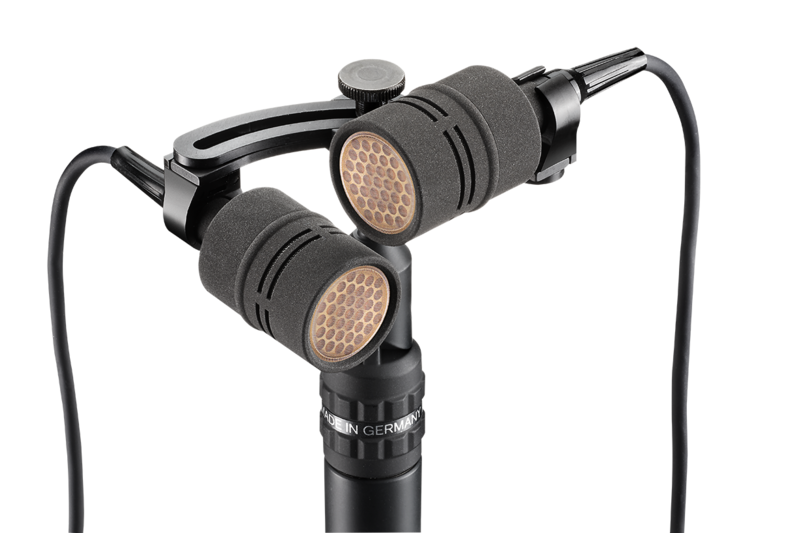One of the most varied applications is as a speaker’s microphone on a table. Usually the microphone should be placed so that it is inconspicuous or even invisible, especially in television, while delivering optimum signal quality. Moreover, body noise and wind noise should be suppressed effectively.
The preferred capsule for speech applications is the KK 184 cardioid, or, in rooms with strong refections, loud environments, or in case of table refections, the KK 185 hypercardioid. With the latter, it is also a question of whether the specific geometry (incident angle) of the table refections is such that the hypercardoid offers the best cancellation (± 120°).
The KK 145 »speech cardioid« is the right choice for extremely close distances (< 10 cm). This mic capsule has a frequency response that has been optimized to deliver balanced response even at extremely close distances.
To pick up several speakers at the same time, for example, in the context of a round-table discussion, the KK 143 wide-angle cardioid can be used to cover a wider angle or the KK 183 omnidirectional can be used to cover an omnidirectional eld. If there are only two speakers, then occasionally the bidirectional KK 120 with figure-eight characteristic, which completely suppresses sounds coming from the side, is set up between the two speakers.


















